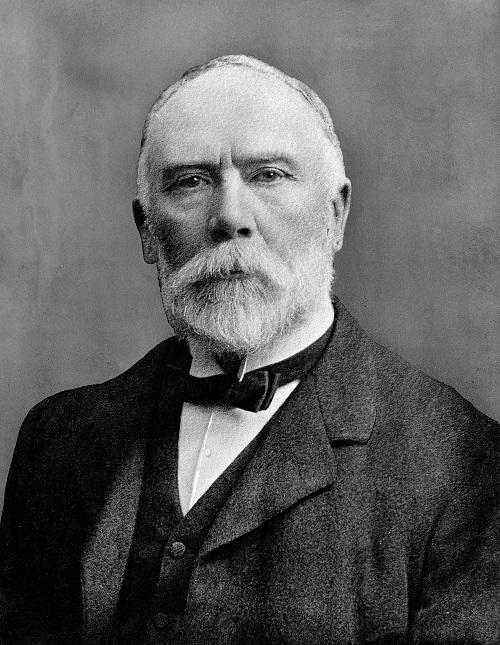James Mackenzie was born at Scone, the second son of Robert Mackenzie, farmer, and his wife Jean Campbell Menzies, and was sent to school at Perth Academy. At the age of fifteen he began an apprenticeship with a chemist, which lasted six years. He then studied medicine at Edinburgh and in 1878 took the M.B, C.M, degrees. A resident appointment in the Royal Infirmary and a visit to Vienna followed, before he settled in general practice at Burnley. There in nearly twenty-eight years, by the unprejudiced and accurate observation de novo of large numbers of patients over long periods, by careful note-taking, by ingenious mechanical devices — including the "polygraph" — invented and constructed during half-hours snatched from a busy practice, he arrived at certain conclusions that were to revolutionise many existing conceptions of the action of the heart in health and disease. On the one hand, he discovered that certain deviations from the normal in rhythm and sound, hitherto believed to be indicative of serious disease, were in reality compatible with ordinary activity and longevity. On the other hand, by analysing, and, where possible, recording graphically, the movements of each chamber of the heart and its reactions to exertion, drugs, infection and valvular changes, he was able to distinguish and classify for the first time, various cardiac irregularities, including auricular fibrillation, previously unrecognised as separate entities. His book The Study of the Pulse (1902) revealed Mackenzie to the medical world as a new and remarkable force in cardiology — an impression renewed by his address to the B.M.A. at Toronto in 1906 and confirmed by the publication of his great work Diseases of the Heart (1908).
A second phase in Mackenzie’s career opened in 1907 when he began to practise as a consultant in London. His success was assured. In 1909 he was appointed physician to the Mount Vernon Hospital for Diseases of the Chest, an office which he resigned after three years, and in 1910 lecturer on cardiac research at the London Hospital, receiving charge of the cardiac department three years later and becoming consulting physician in 1918. He was selected to deliver the Oliver-Sharpey Lectures at the Royal College of Physicians in 1911 and the first Gibson memorial lecture at Edinburgh University in 1914. He was knighted in 1915 and appointed Physician to the King in Scotland in 1920. During the war years he drew up a memorandum on the medical examination of the recruit’s heart, enquired into the irritable heart of soldiers on behalf of the Medical Research Committee and helped to organise the Heart Hospital at Colchester.
Mackenzie’s experience had led him to believe that the knowledge of disease was to be advanced most surely in clinical field-work such as he himself had undertaken in general practice and that every general practitioner should be a research worker, checking his findings in the midst of an active population. Therefore, while at the height of his powers, he left London in 1918 to found an Institute of Clinical Research at St. Andrews, designed to further the prevention of common diseases by the investigation and assessment of symptoms before the occurrence of structural changes, rather than by the application of laboratory methods to the patient. It was to this institution that he devoted his few remaining years.
Mackenzie was a man of vivid personality, hard-headed though sometimes impetuous, impatient of opposition, but a servant of truth, outspoken, visionary, eager. He married in 1887 Frances, daughter of Dr. George Jackson of Boston, and had two daughters. His younger brother became the first Lord Amulree, and the second Lord Amulree, F.R.C.P., is his nephew. He died in London.
G H Brown
[Lancet, 1925; B.M.J., 1925; Times, 27 Jan. 1925]; D.N.B., 1922-30, 543; Presidential Address to R.C.P., 1925, 32; R. M. Wilson, The Beloved Physician, 1926]

